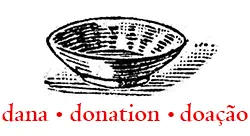Quotes by Chokyi Nyima Rinpoche
Most people never question their day-to-day experiences. They accept whatever is felt and perceived as real. Without examining anything we will never penetrate beyond this illusion to see the actual state of affairs. Instead, we will regard everything that is impermanent as being permanent, what is unreal as being real. What an unfortunate, superficial and mistaken way of perceiving things!
There's no greater foolishness than to spend one's lifetime acknowledging that one is deluded and yet doing nothing whatsoever about it.
You can go and meet a really skilled doctor, hold his hand, smile at him but you can’t get well from that, you have to take the medicine. It is the same with the dharma, we have to practice the dharma if we want it to transform us.
In the world these days, there is good education, economical development, many technologies. But what do we lack in the world? We lack kindness, love, and respect. Kindness brings peace to the heart. Kindness is antidote to all negative emotions. Kindness keeps away stress and depression. Kindness helps to get along with everyone.
We may shout, ‘Let there be peace!’ but this won’t really bring peace. Peace will appear in the world around us only when each individual learns to tame the disturbances arising within his or her own mind.
All sentient beings are potentially buddhas. They are temporarily obscured, but in essence they are buddhas. Obscured suchness may become unobscured suchness, which is buddha. The obscuration can be purified; it will be purified; it is able to be purified.
The real benefit of studying the Buddha’s teachings and the statements of enlightened masters is to be inspired to change the way we think, speak and behave, which will make us more civil, gentle and peaceful. When we thoroughly investigate the value of the meaning presented, it becomes obvious that we can become free - each and every one of us. This confidence is achieved through understanding, and understanding is a result of thinking the teachings over. We do not need to let the teachings remain as mere words or ideas - we can put them to use in our own experience. This is how buddhanature can be revealed, since it is already present in every one of us. That is why I encourage you to study, reflect on, and personally apply the teachings.
While you are alive, don't make anyone angry. When you die, don't be attached to anything.
People tend to plan their Dharma practice, and especially like to dream of making a long retreat. We plan how the retreat hut should look, its shape and where it should be positioned; we plan the time to start our retreat, maybe one, two or three years from now. It is very easy to make such plans, but it is more difficult for these plans to become reality. Therefore, it is more realistic to engage in Dharma practice today, right this moment, not tomorrow or next year. Practice now in whatever situation is at hand. Otherwise, your life can easily run out while planning to practice later. Do not make long-term plans.
If we think of ourselves as cattle with ropes hanging from our noses, Dharma practitioners hold that rope in their own hands, whereas ordinary people are controlled by others.
Caso nos imaginemos como gado, com uma corda nos prendendo pelo nariz, os praticantes do Darma são aqueles que seguram esta corda nas próprias mãos, enquanto as pessoas comuns são controladas pelos outros.
Resolve the view definitively! Refine the practice repeatedly!
If there is the genuine view, the pure view, then all of the ten negative actions will be abandoned naturally.
When you study the Dharma, please do so with a willingness to admit, “I do have some faults. They are mine and I am also the one who needs to change them.” Once we face ourselves with this type of sincerity, the door is wide open to genuine progress by quickly taming our own minds.
By seeing that all the pleasures and luxuries of this world do not last, that they are hollow and futile, attachment naturally decreases. One gains a spontaneous taste for liberation and enlightenment. One can then embark on the path without any turning back. Manjushri said, “If you are attached to this life, you are not a practitioner. If you are attached to samsaric existence, you have no renunciation. If you are attached to selfish aims, you have no bodhicitta. If you have any attachment at all, you don’t have the view.”
One should first recognize the Buddha-Nature, then train in it, and finally attain stability. In order to recognize the Buddha-Nature, we must identify exactly what is preventing us from realizing it now and what needs to be cleared away - all the passing stains of confusion. Where did these passing stains come from? The ground itself, the Buddha-Nature, is without impurity or confusion, but the temporary defilements, the stains of confusion, result from not having recognized the state of the ground.
What is fruition? The immaculate Dharmakaya is the fruition of having purified these stains. Through practice, we unveil a state free from all dualistic phenomena, free from holding on to subject and object, perceiver and perceived. Having totally discarded all the different ways of being mistaken, having rid oneself of the passing stains, we realize Dharmakaya, the ground itself exactly as it is. This is the fruition of purification.
Within Buddhism there are traditionally two approaches to studying, reflecting upon and practicing the sacred Dharma: the analytical approach of a scholar and the simple approach of a meditator.
The style of a scholar is to study numerous details and carefully reflect upon them, refining one's understanding through using the words of the Buddha, the statements of enlightened masters, and one's personal power of reasoning. By doing so one can establish a clear understanding of the real state of things as they are, the profound emptiness that is the essence of realization of all the buddhas. This is one type of approach and it is excellent.
Certain people, whose character is intellectually inclined, find it best to take this approach, especially if they harbor many thoughts and doubts, or have a tendency toward nit-picking and suspiciousness. A person with a skeptical mentality finds it very difficult to trust a genuine master, even after having met him and received the revealing pith instructions. A strong fascination with critical questioning and analyzing prevents one from following the approach of a simple meditator and from gaining an immediate certainty about the profound nature of emptiness, the basic wakefulness that is the very heart of all the buddhas. Due to these reasons some people find much greater benefit from the analytical approach of a scholar through which doubts and lack of understanding can be gradually cleared away.
Another type of person feels less inclined to study all the details of the words of the Buddha and the statements of enlightened masters, or to investigate them with the power of factual reasoning. Rather, they wish to focus directly on the very core of the awakened state-the wakefulness that perceives every possible aspect of knowledge exactly as it is-personally, within their own experience. Such people are not so interested in taking a long, winding, round-about road through detailed studies and analytical speculations; rather, they want immediate and direct realization. For such people there is the approach of pith instructions including Mahamudra and Dzogchen.





